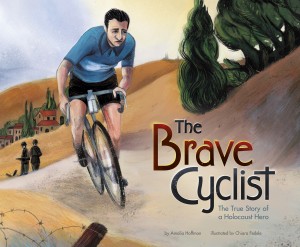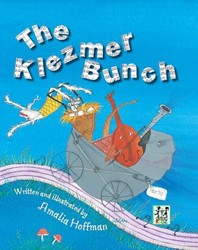This brief but eloquent book for young children traces the link between the creation of the world and a child’s feelings about her own artistic productivity. The reader follows two small handprints dipped in paint as they bring new forms of life into being, just as God did in the book of Genesis.
Most children have brought home similar handprints from school projects. Here, they are more spontaneous, directed by the young artist herself. The book begins with an explosion of color, and goes on to black and white prints for darkness and light, blue for the sky and water, and green and pastels for trees and flowers. On the sixth day of creation, playful animals join the brand-new world, and human beings appear. Since the child’s perspective is at the center, these people are not Adam and Eve, but children.
The simplicity of the book is appealing, and it offers a different entry point for children’s understanding of how the world came to be. Instead of maintaining a literal interpretation of the biblical account, Hoffman approaches the subject of the world’s birth as an analogue to how children’s untutored creativity celebrates the world as it is: beautiful, colorful, populated by animals and plant life and the people we love. Even the youngest reader can become involved in the act of creating a world, changing the idea from an abstraction to a literally hands-on activity. Each serves as both an individual artist and a collective participant in creation.
Emily Schneider writes about literature, feminism, and culture for Tablet, The Forward, The Horn Book, and other publications, and writes about children’s books on her blog. She has a Ph.D. in Romance Languages and Literatures.





